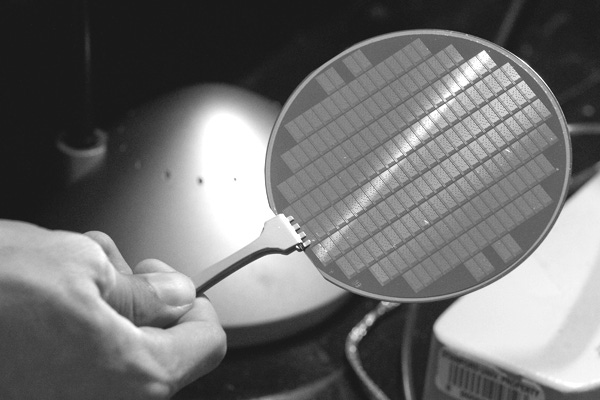IBM Watson researchers said that they’ve discovered a new way to make transistors other than silicon.

A group of IBM (IBM) Watson researchers said that they’ve discovered a new way to make transistors other than silicon to carry the electrical impulses back and forth required to drive high performance computing.
IBM scientists said they found a new way to hook increasingly thin wires to carbon nanotubes without incurring the resistance and heat building up that compromises silicon chips currently serving as the bones and brains of computing.
IBM said the results of its research will be reported in the October 2 issue of Science magazine.
Silicon transistors carrying information on a chip, while getting smaller year after year, are fast approaching their physical limitations. With Moore’s Law–the number of transistors in a dense integrated circuit will double approximately every two years–running out of steam, semiconductor researchers have been searching for years to find a replacement vehicle.
IBM now believes it’s found something.
“These chip innovations are necessary to meet the emerging demands of cloud computing, Internet of Things and Big Data systems,” said Dario Gil, IBM Research Science & Technology vice president.
“As silicon technology nears its physical limits, new materials, devices and circuit architectures must be ready to deliver the advanced technologies that will be required by the Cognitive Computing era,” he said. “This breakthrough shows that computer chips made of carbon nanotubes will be able to power systems of the future sooner than the industry expected.”
In particular, carbon nanotube chips could exponentially improve high performance computing, enabling faster analysis of Big Data, increasing the power and battery life of mobile devices, data transmission of the Internet of Things, and enabling cloud data centers to deliver services more efficiently and economically, IBM said.
Previous IBM research showed that carbon nanotube transistors can operate as excellent switches at channel dimensions of less than ten nanometers–equivalent to 10,000 times thinner than a strand of human hair and less than half the size of today’s leading silicon technology.
IBM’s new contact approach overcomes the other major hurdle in incorporating carbon nanotubes into semiconductor devices, which could result in smaller chips with greater performance and lower power consumption.
About the Author(s)
You May Also Like


